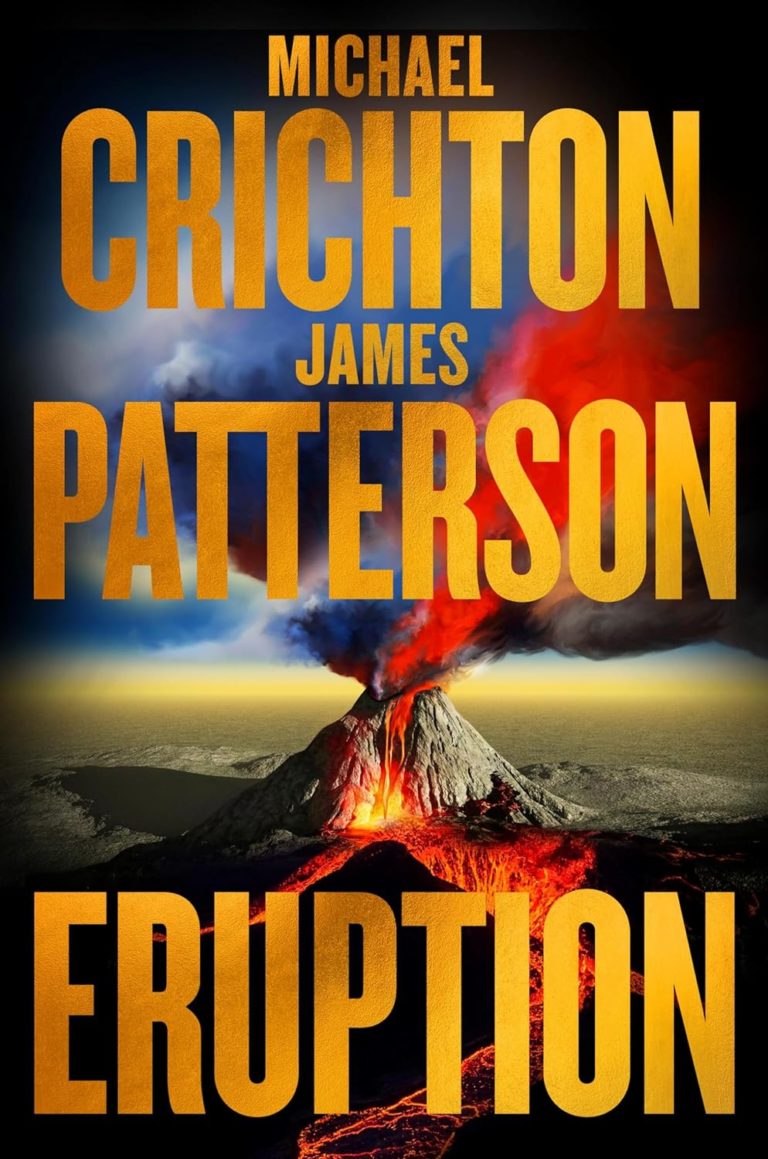 |
| Eruption Book Review: A Riveting Journey Through Volcanic Catastrophes (Pics: jamespattersonbooklist.com) |
BUDAYABACAONLINE.MY.ID - For centuries, humanity has been both fascinated and terrified by volcanoes, the earth's fiery vents that connect us to the planet's molten heart. These majestic yet deadly formations have shaped landscapes, influenced climates, and even altered the course of history. In "Eruption," author Steve Olson takes readers on a captivating journey through one of the most catastrophic volcanic events of the 20th century: the eruption of Mount St. Helens.
A Detailed Chronicle of Nature's Fury
"Eruption" is more than just a recounting of a volcanic disaster; it is a deeply researched and meticulously crafted narrative that blends science, history, and human stories. Olson begins by setting the stage, describing the rich and diverse ecosystem surrounding Mount St. Helens before it was destroyed in the eruption. He paints a vivid picture of the natural beauty that once existed, making the subsequent destruction even more poignant.
The heart of the book delves into the events leading up to the May 18, 1980, eruption. Olson expertly weaves together eyewitness accounts, scientific observations, and historical context to create a gripping narrative. He explores the warning signs that were observed in the weeks before the eruption, including the increasing seismic activity and the growing bulge on the mountain's north side. Despite these ominous signals, the full scale of the impending disaster was not fully understood until it was too late.
Human Stories Amidst the Chaos
One of the most compelling aspects of "Eruption" is how Olson brings to life the human stories intertwined with the disaster. He introduces readers to a diverse cast of characters, including scientists, local residents, and even those who lost their lives in the eruption. Through their stories, Olson captures the tension and uncertainty that gripped the region in the days leading up to the explosion.
The book is particularly effective in conveying the emotional impact of the eruption. Olson's writing is both empathetic and respectful, ensuring that the victims' stories are told with the dignity they deserve. Readers are given a sense of the fear, confusion, and ultimately, the profound sense of loss that followed the eruption.
Scientific Insights and Environmental Lessons
In addition to the human stories, "Eruption" offers a comprehensive look at the science behind volcanic activity. Olson explains complex geological processes in a way that is accessible to readers without a background in science. He delves into the mechanics of the eruption, from the initial earthquake that triggered the landslide to the massive lateral blast that devastated the surrounding area.
The book also explores the aftermath of the eruption, including the extensive research conducted in its wake. Scientists used the event as a natural laboratory, studying everything from volcanic ash distribution to the impact on local wildlife. These studies have provided valuable insights into volcanic behavior and have improved our ability to predict and prepare for future eruptions.
Furthermore, "Eruption" highlights the environmental lessons learned from the disaster. The eruption of Mount St. Helens served as a stark reminder of the power of nature and the need for careful stewardship of the environment. Olson discusses how the area around the volcano has been managed in the years since the eruption, with a focus on balancing preservation and scientific research.
A Broader Historical Perspective
While the eruption of Mount St. Helens is the central focus of the book, Olson also places the event within a broader historical context. He examines the history of volcanic eruptions around the world, drawing parallels between different events and exploring how they have shaped human civilization. From the destruction of Pompeii to the eruption of Krakatoa, Olson demonstrates that volcanoes have always been a force to be reckoned with.
This historical perspective adds depth to the narrative, showing readers that the Mount St. Helens eruption was not an isolated event but part of a larger pattern of volcanic activity that has influenced the course of history. Olson also discusses how the eruption fits into the broader context of natural disasters in the United States, comparing it to events like the 1906 San Francisco earthquake and Hurricane Katrina.
Critical Reception and Impact
Since its publication, "Eruption" has received widespread acclaim for its thorough research, engaging writing style, and balanced approach. Critics have praised Olson for his ability to combine scientific rigor with compelling storytelling, making the book both informative and entertaining. It has been hailed as a definitive account of the Mount St. Helens eruption and a must-read for anyone interested in natural disasters, geology, or environmental science.
The book has also had a lasting impact on public awareness of volcanic hazards. By bringing the story of Mount St. Helens to a wider audience, Olson has helped to highlight the importance of disaster preparedness and the need for ongoing research into volcanic activity. The lessons learned from the eruption continue to inform efforts to mitigate the risks posed by volcanoes and other natural disasters.
Conclusion: A Must-Read Exploration of Nature’s Power
"Eruption" is more than just a book about a volcanic disaster; it is a powerful reminder of the awe-inspiring and unpredictable forces that shape our planet. Through his careful research and engaging storytelling, Steve Olson has crafted a work that is both informative and deeply moving. Whether you are a science enthusiast, a history buff, or simply someone who enjoys a good story, "Eruption" is a book that will captivate your imagination and leave you with a greater appreciation for the natural world.
In conclusion, "Eruption" is a remarkable achievement in non-fiction writing. It succeeds in bringing to life one of the most significant natural disasters of the 20th century while also providing valuable insights into the science of volcanoes and the impact of such events on human society. This book is not only a compelling read but also an important contribution to our understanding of the powerful forces that shape our world.








0 Comments